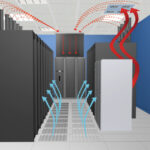In an era where our reliance on electricity is stronger than ever, the need for robust security measures has never been more critical. The North American energy grid is a complex tapestry of interconnected systems that power homes, businesses, and industries. Yet, with this complexity comes vulnerability—an increasing target for cyber threats and physical attacks. This is where NERC CIP steps into the spotlight.
NERC CIP stands for the North American Electric Reliability Corporation Critical Infrastructure Protection standards, designed to bolster the resilience of our energy infrastructure. These regulations are not just bureaucratic checkboxes; they play a vital role in safeguarding against potential disruptions that could have far-reaching consequences.
But what exactly does NERC CIP entail? How does it protect our essential resources? Join us as we dive deeper into this crucial framework and explore its importance in maintaining secure and reliable energy systems across North America.
What is the Purpose of NERC CIP?
The North American Electric Reliability Corporation Critical Infrastructure Protection (NERC CIP) framework is designed to safeguard the bulk power system. Its primary purpose is to ensure that critical infrastructure remains resilient against both physical and cyber threats.
By establishing mandatory standards, NERC CIP aims to protect the assets essential for maintaining reliable electricity delivery. This includes data centers, control systems, and communication networks vital for operational integrity.
Another significant aspect of NERC CIP is its focus on risk management. It encourages utility companies to identify vulnerabilities proactively and implement measures to mitigate potential risks before they escalate into serious incidents.
NERC CIP fosters a culture of security within organizations involved in energy production and distribution. Through ongoing training and awareness programs, personnel are equipped with the knowledge needed to recognize threats effectively.
The Importance of Protecting Energy Systems
Energy systems are the backbone of modern society. They power our homes, businesses, and critical infrastructure. A disruption in these systems can lead to widespread chaos.
As technology evolves, so do threats. Cyberattacks on energy grids have become more sophisticated and frequent. Protecting these systems is no longer optional; it is essential for national security.
Moreover, energy reliability impacts economic stability. Industries rely heavily on consistent power supply to operate efficiently. Any interruption can lead to significant financial losses and affect jobs.
Public safety also hinges on robust energy systems. Emergencies like natural disasters require reliable access to electricity for first responders and hospitals.
Investing in protection measures safeguards not just resources but lives too. It creates a resilient framework that prepares us for unforeseen challenges while maintaining trust in our infrastructure’s integrity.
Key Requirements of NERC CIP
NERC CIP outlines a robust framework aimed at securing the bulk electric system. These requirements are essential for mitigating risks associated with cyber threats.
One of the key mandates is asset identification. Entities must accurately catalog critical assets that, if compromised, could impact reliability.
Another vital requirement focuses on security management controls. Organizations need to establish policies and procedures that ensure consistent compliance with cybersecurity measures.
Training and awareness programs also play a crucial role. Personnel must be well-versed in security protocols to prevent human errors from becoming vulnerabilities.
Incident response plans are non-negotiable. Preparedness ensures swift actions can be taken during an event to minimize damage and restore operations effectively.
These components work together to create a resilient energy infrastructure capable of withstanding various challenges in today’s dynamic threat landscape.
Compliance and Enforcement Measures
Compliance and enforcement are crucial components of the NERC CIP framework. These measures ensure that organizations adhere to established standards aimed at protecting bulk power systems.
Utilities must demonstrate compliance through regular audits and self-assessments. This proactive approach helps identify vulnerabilities before they can be exploited.
When violations occur, NERC has a structured process for addressing them. Penalties may include fines, remedial actions, or even restrictions on operations depending on severity.
The goal is not merely punishment but fostering an environment where energy systems remain secure and resilient against threats. Continuous monitoring plays a vital role in this strategy, allowing for timely interventions when necessary.
Organizations often invest heavily in training and resources to stay compliant with evolving regulations. This commitment ultimately strengthens the entire energy sector’s stability across North America.
Recent Updates and Changes in NERC CIP
Recent developments in NERC CIP reflect the ever-evolving landscape of energy security. One notable update is the increased emphasis on supply chain risk management. As threats grow more sophisticated, protecting critical assets from vulnerabilities within the supply chain has become essential.
Additionally, recent changes have introduced more stringent requirements for incident reporting and response procedures. This ensures that organizations can swiftly address any potential breaches or attacks.
Another key update involves enhanced training protocols for personnel handling sensitive systems. The focus is now on fostering a culture of cybersecurity awareness among employees at all levels.
Moreover, there’s an ongoing push towards integrating advanced technologies like artificial intelligence into compliance frameworks. These innovations promise to streamline monitoring processes and identify risks earlier than traditional methods allow.
As these updates unfold, stakeholders must adapt proactively to maintain robust defenses against emerging threats in our interconnected energy infrastructure.
Future Outlook for NERC CIP
The future of NERC CIP is poised for evolution. As technology advances, so do the threats to our energy systems. Cybersecurity measures will need continuous updates to keep pace with emerging risks.
Moreover, integrating renewable energy sources presents new challenges. The complexity of these grids demands robust safeguards under NERC CIP guidelines.
Stakeholders are increasingly aware that compliance goes beyond mere regulations. It’s about fostering a culture of security within organizations.
Collaboration among industry players and regulators will be essential. Sharing threat intelligence can enhance collective defenses against potential attacks.
As we look ahead, a more proactive approach may emerge in risk assessment and management strategies. Innovations in artificial intelligence could also play a role in enhancing monitoring processes.
Adapting to this dynamic landscape while maintaining stringent standards remains crucial for the integrity of North America’s energy infrastructure.
Conclusion
The NERC CIP framework plays a critical role in ensuring the resilience and security of North America’s energy systems. By establishing standards that protect against cyber threats and physical attacks, it fosters greater trust among stakeholders in the electricity sector.
As the energy landscape evolves with new technologies and increasing interconnectivity, so too must NERC CIP adapt to emerging challenges. Organizations need to stay informed about compliance requirements and updates to effectively safeguard their operations.
Looking ahead, collaboration between industry participants will be vital for enhancing protection measures. Continuous improvement of cybersecurity practices within the context of NERC CIP will be essential for maintaining a secure energy infrastructure.
A well-informed approach towards compliance not only protects assets but also supports reliability across the entire grid system. The commitment to upholding these standards underlines a shared responsibility towards safeguarding our collective future in energy management.


